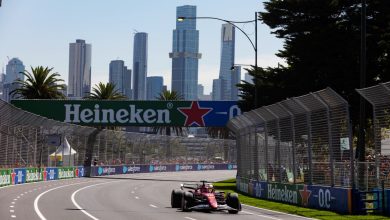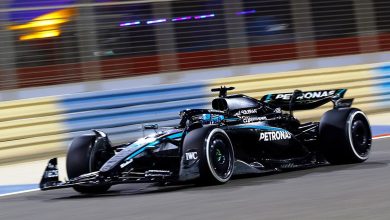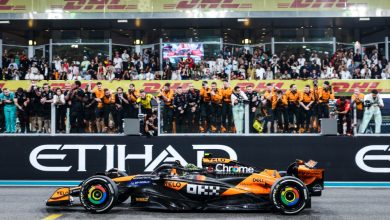Ricciardo disqualified for fuel flow irregularity; Red Bull to appeal

Melbourne, 16 March 2014: Red Bull Racing’s Daniel Ricciardo has been excluded from the Australian Grand Prix result, after FIA officials said his RB10 had “exceeded consistently” the new fuel flow regulations in place for this season. Ricciardo had finished the race in second place.
The stewards’ decision said that FIA technical delegate Jo Bauer had reported that Ricciardo’s car had exceeded the required fuel mass flow of 100kg/h governed by Article 5.1.4 of the 2014 Formula One Technical Regulations.
In reaching their decision to disqualify Ricciardo the stewards stated that they had taken into account a history of the sensor fitted to the car in that on Friday of the Australian Grand Prix weekend, during FP1, the sensor fitted to measure fuel flow showed a “difference in reading between the first three and Run 4. The same readings as Run 4 were observed throughout Practice 2.”
The team then used a different sensor on Saturday “but did not get readings that were satisfactory to them or the FIA, so they were instructed to change the sensor within Parc Fermé on Saturday night. They operated the original sensor during the race, which provided the same readings as Run 4 of Practice 1, and Practice 2.”
The stewards added that the FIA technical representative in charge of the sensors “instructed the team to apply an offset to their fuel flow such that the fuel flow would have been legal.”
The verdict added that “the technical representative stated to the Stewards that there is variation in the sensors, however, the sensors fall within a known range, and are individually calibrated. They then become the standard which the teams must use for their fuel flow.”
The stewards’ statement continued by saying that Red Bull Racing then stated “that based on the difference observed between the two readings in P1, they considered the fuel flow sensor to be unreliable. Therefore, for the start of the race they chose to use their internal fuel flow model, rather than the values provided by the sensor, with the required offset.”
During the race, telemetry readings showed that the fuel flow was too high and that the team was informed of the issue and was given “the opportunity to follow his previous instruction, and reduce the fuel flow such that it was within the limit, as measured by the homologated sensor… the team chose not to make this correction.”
The stewards thus found that the team chose to run its car using its fuel flow model, without direction from the FIA and in violation of a procedure contained within a prior technical directive, and that even though there were differences in readings in FP1 the sensor fitted remained “the homologated and required sensor against which the team is obliged to measure their fuel flow, unless given permission by the FIA to do otherwise.”
The statement concluded that the team could have run within the allowable fuel flow and that “regardless of the team’s assertion that the sensor was fault, it is not within their discretion to run a different fuel flow measurement method without the permission of the FIA.” They thus excluded Ricciardo from the result.
Red Bull Racing immediately announced its intention to appeal the decision and therefore the race result remains provision, pending a hearing.
The full stewards’ decision can be found here:
http://www.fia.com/championship/fia-formula-1-world-championship/2014/australian-grand-prix-event-documents







